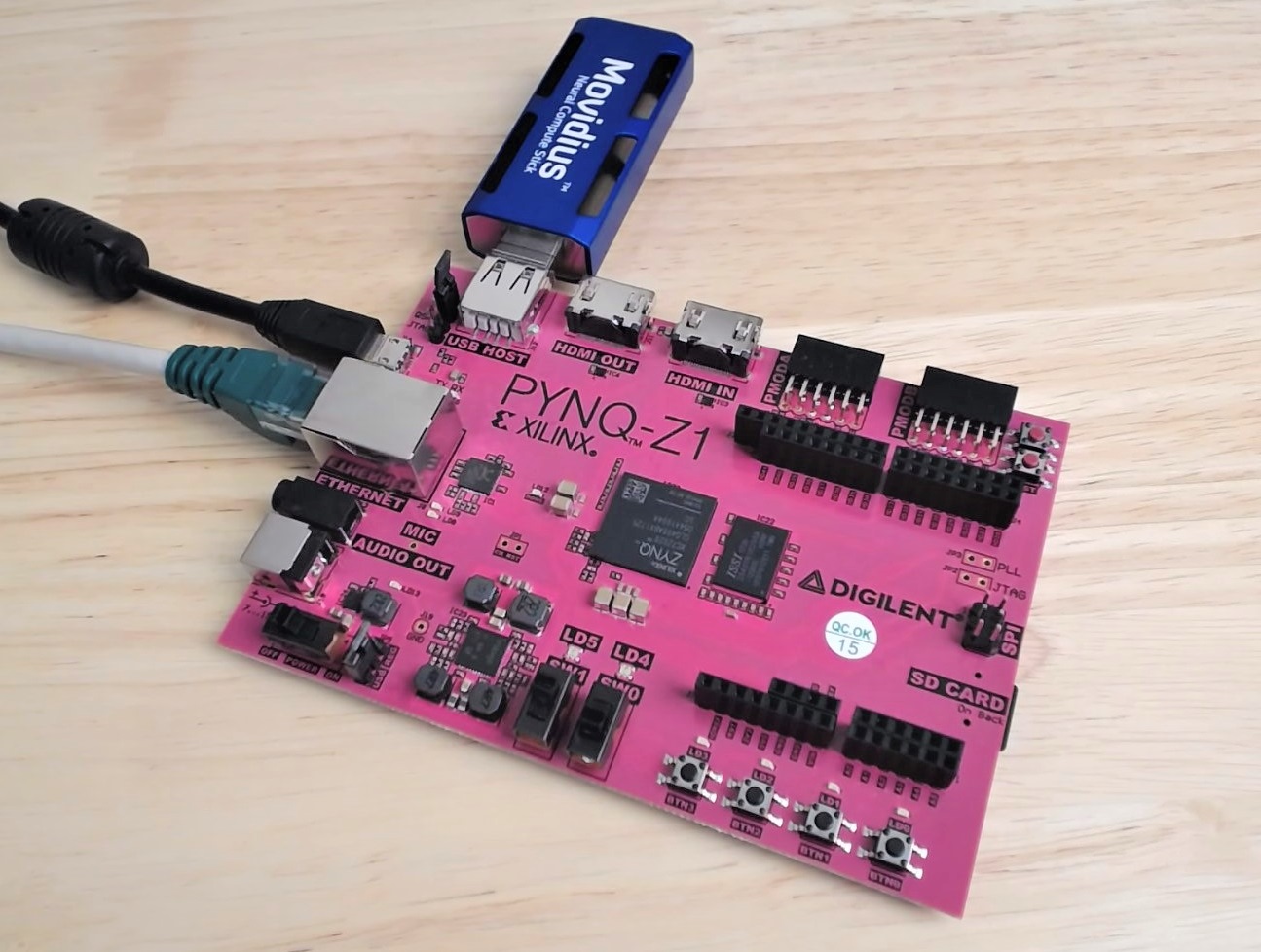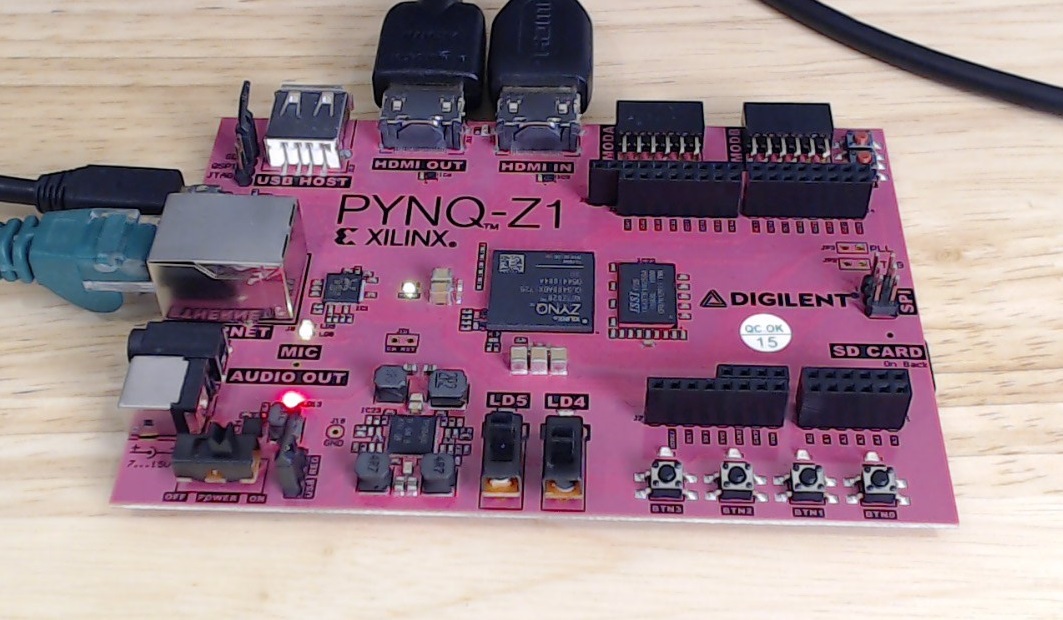Setting up the PYNQ-Z1 for the Intel Movidius Neural Compute Stick

The Intel Movidius Neural Compute Stick (NCS) is a neural network computation engine in a USB stick form factor. It’s based on the Myriad-2 chip, referred to by Movidius as a VPU or Visual Processing Unit, basically a processor that was specifically designed to accelerate neural network computations, and with relatively low power requirements. The NCS is a great match for single board computers like the Raspberry Pi, the Beagle Bone and especially the PYNQ-Z1.
[Read More]
